Lahti
- For information about the Finnish weapon designer, see Aimo Lahti.
| City of Lahti Lahden kaupunki - Lahtis stad |
|||
 |
|||
|
|||
 |
|||
| Country | Finland | ||
|---|---|---|---|
| Province | Southern Finland | ||
| Region | Päijänne Tavastia | ||
| Charter | November 1st, 1905 | ||
| Government | |||
| - City manager | Jyrki Myllyvirta | ||
| Area | |||
| - Total | 155 km² (59.8 sq mi) | ||
| - Land | 135 km² (52.1 sq mi) | ||
| - Water | 20 km² (7.7 sq mi) | ||
| Population (31.8.2008) | |||
| - Total | 99,816 | ||
| - Density | 739/km² (1,914/sq mi) | ||
| Website: www.lahti.fi | |||
Lahti (Swedish: Lahtis) is a city and municipality in Finland.
It is the capital of the Päijänne Tavastia region located in the province of Southern Finland. It is situated on a bay at the southern end of lake Vesijärvi about 100km (62 miles) north-east of the capital Helsinki. In English, the Finnish word Lahti literally means bay and Vesijärvi means water lake.
The symbol of the city depicts a train wheel surrounded by sparkling flames.
Contents |
History
Lahti was first mentioned in documents in 1445. In those days, Lahti village was part of the parish of Hollola. The reason why Lahti grew into a village as early as the Middle Ages was partly its good location at the junction of waterways and roads. In 1870, Lahti was a typical village of the Häme region lying along the highway between Hämeenlinna and Viipuri (now Vyborg in Russia). According to accounts from the time, the roads in the town center were so narrow that you could barely turn a horse and carriage around, and the buildings were so close to each other that just walking in between them was a squeeze.
The completion of the Riihimäki – St. Petersburg railway line in 1870 and the Vesijärvi canal in 1871 turned Lahti into a lively station, and industrial installations began to spring up around it. For a long time, the railway station at Vesijärvi Harbour was the second busiest station in Finland. Craftsmen, merchants, a few civil servants and a lot of industrial workers soon mixed in with the existing agricultural peasantry.
On 19 June 1877, almost the entire village was burned to the ground. However, the accident proved to be a stroke of luck for the development of the place, as it led to the authorities once again resuming their deliberations about establishing a town in Lahti. The village was granted market town rights in 1878 and an empire-style, grid town plan was approved, which included a large market square and wide boulevards. This grid plan still forms the basis of the city center. Most of the buildings were low wooden houses bordering the streets.
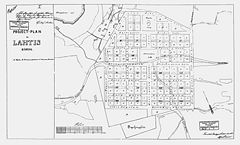
Lahti was founded during a period of severe economic recession. The Russian Empire was encumbered by the war against Turkey. Boat traffic on Lake Päijänne and Lake Vesijärvi had dropped considerably since the early 1870s. The recession also slowed down the building of the township: land would not sell and often plots were not built on for some time. In its early years, the town with its meager 200 inhabitants was too small to provide and kind of foundation for trade. At the end of the 1890s, Lahti’s Township Board increased its efforts to enable Lahti to be turned into a town. In spring 1904, the efforts finally bore fruit as the Senate approved of the application, although it was another eighteen months before Tsar Nicholas II finally gave his blessing and issued an ordinance for establishing the town of Lahti.
At the end of 1905, the area that now comprises Lahti accommodated around 8,200 people of whom just under three thousand lived in the town itself. All essential municipal institutions were built in just ten years, including a hospital and a town hall. At the same time, a rapid increase in brick houses was taking place in the center of the town.
Lahti’s dynamic growth period was cut short by the First World War. In the newly independent Finland, the town found itself facing a completely new situation. Industry had to re-orientate itself as the trade with Russia was lost. Lahti continued its growth regardless, and at the start of the 1920s the town gained possession of the grounds of the Lahti Manor, bringing the population up to 8,500 people. Large-scale industrial operations grew rapidly in the 1930s; Lahti was one of Finland’s fastest-growing towns, and before the start of the Winter War its population was approaching 30,000.
Through the addition of new areas in 1924, 1933 and 1956, Lahti grew, both in terms of population and surface area. Especially strong was the growth after the wars, when Lahti accepted about 10,000 immigrants from Karelia, after the region was surrendered to the Soviet Union, and then later in the 1960 and 70's, when, as a result of mass movement, people moved there from elsewhere in eastern Finland. Complete new districts of the town sprang up. The town continued to grow up until 1975, when the population had reached over 95,000.
Culture
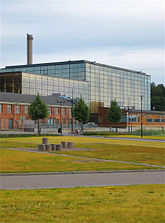
Lahti harbors cultural ambitions, and recent years saw the building of a large congress & concert center, the Sibelius Hall. This has sparked much controversy amongst the population, many of whom feel that the money used for these purposes would be better spent on health care and education. Lahti has perhaps the best known symphony orchestra in Finland, Lahti Symphony Orchestra (Sinfonia Lahti). It concentrates on Sibelius's music.
Lahti’s annual music festival programme includes such events as Lahti Organ Festival, Jazz at the market place and Sibelius Festival.
Sports


Lahti is best known for its annually held World Cup winter games, the Lahti Ski Games (Salpausselän kisat). Ski jumping events of Lahti Ski Games are part of the Nordic Tournament.
The city endeavors for achievements in sport, which has led to such things as the hosting of a World Games event. As of 2007, it is the only city to host the FIS Nordic World Ski Championships six times, doing so in 1926, 1938, 1958, 1978, 1989, and 2001.
The city also has an Association Football (soccer) club, FC Lahti, and an ice hockey team, the Lahti Pelicans. In July-August 2009, Lahti will host the 18th World Masters Athletics Championships, an outdoor age-group track meet for men and women 35 and over.
Education


In the educational sector, Lahti is modest.
Its greatest asset is the highly valued Institute of Design, which is a part of Lahti University of Applied Sciences. The institute has gained international recognition in particular for jewelery and industrial design. Other areas of expertise include metal, woodworking and furniture.
The Faculty of Physical Activity at Lahti University of Applied Sciences offers a Bachelor's degree programme in Sports Studies. The Sports Institute of Finland, which is based in Vierumäki near Lahti, is the most versatile centre of sports education in the country. In addition, Pajulahti Training Center, located in the neighboring town of Nastola, is one the leading sports and training centres in Finland.
Lahti is also the home of Helsinki University's department of Environmental and Ecological Sciences (Faculty of Biosciences). It's the only science department of the University of Helsinki located outside the greater Helsinki area.
| Tertiary Education |
|---|
Lahti Region Educational Consortium
|
| Upper Secondary Schools |
|---|
|
| Vocational Schools |
|---|
|
Lahti Region Educational Consortium
|
| Comprehensive Schools |
|---|
Special education
|
| Private Schools |
|---|
|

Economy
The economic region of Lahti, which includes the surrounding municipalities, was strongly affected by the collapse of Finnish-Soviet trade and by the recession in the early 1990s.
The value of production slumped, especially in the mechanical engineering industry and other manufacturing industries (e.g. the furniture industry). Production also decreased in the textile and clothing industry. In 1990, there were 90 370 jobs in the Lahti Region. The number of jobs diminished over the next couple of years, so that in 1993 there were fewer than 70 000 jobs in the Lahti Region. The number of jobs had slowly increased to 79 138 in 1999.
By the end of the last millennium, it had become quite clear that the region was having difficulty in transforming itself from an industrial, to a services-based economy. The main problems in the Lahti Region were the low number of highly educated people and disastrously low R&D spending. The population, due to low level of education, had trouble accessing labor markets which resulted in a very high rate of structural unemployment. Neither has the modernization of the industry been successful enough to maintain jobs.
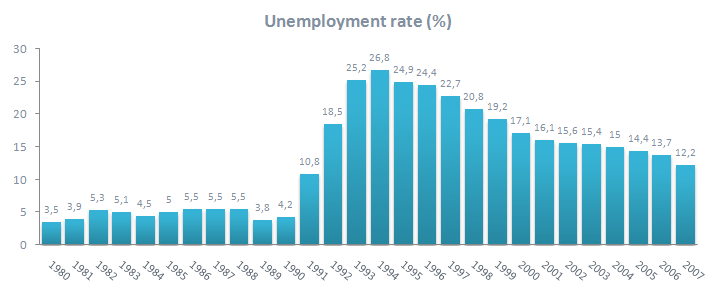
| Employment by sector (City of Lahti) | 1980 | 1990 | 2000 | 2007 |
|---|---|---|---|---|
| Services | 52,0 % | 59,3 % | 63,5 % | 72,4 % |
| Industry | 47,1 % | 40,1 % | 36,4 % | 27,4 % |
| Agriculture & Forestry | 0,9 % | 0,6 % | 0,1 % | 0,2 % |
In 1995, R&D expenditure was FIM 715 per person, while Finland's average was about FIM 2050. The amount of Tekes (the National Technology Agency) funding in the Lahti Region grew 40% during 2004-2007 while the average growth in Finland was 60%. The low contribution to training and research retards business development in the region. The region remains continually outside the important flows of capital, as it cannot attract them with its own expertise.
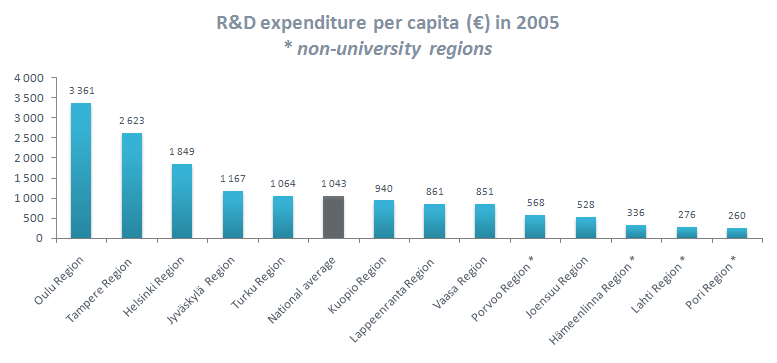
| Gross domestic product (Lahti Region) | 2000 | 2001 | 2002 | 2003 | 2004 | 2005 | 2006 |
|---|---|---|---|---|---|---|---|
| GDP at current prices; million € | 3 449,3 | 3 709,7 | 3 697,5 | 3 982,3 | 4 136,8 | 4 242,4 | 4 381,9 |
| Changes of GDP; year 2000 =100% | 100,0 % | 107,5 % | 107,2 % | 115,5 % | 119,9 % | 123,0 % | 127,7 % |
| GDP per capita; whole country =100% | 80,7 % | 82,0 % | 79,4 % | 84,3 % | 83,9 % | 83,4 % | 81,2 % |
| GDP per employed; whole country =100% | 86,6 % | 87,3 % | 83,6 % | 88,9 % | 88,7 % | 88,6 % | 87,1 % |
Demographics
As of 31 August 2008 Lahti’s population was 99 816, making it the seventh largest city in Finland by population.
| Population by district | 1964 | 1970 | 1980 | 1990 | 2000 | 2007 |
|---|---|---|---|---|---|---|
| Center (Keskusta) | 27 400 | 21 800 | 15 600 | 13 700 | 17 280 | 19 778 |
| Laune | 13 200 | 17 100 | 23 300 | 22 600 | 23 670 | 24 568 |
| Kivimaa-Kiveriö-Joutjärvi | 17 100 | 23 500 | 20 700 | 18 300 | 17 790 | 16 974 |
| Kärpänen | 9 400 | 7 600 | 12 800 | 12 700 | 11 940 | 11 612 |
| Ahtiala | 4 600 | 5 100 | 5 100 | 9 100 | 10 500 | 10 897 |
| Mukkula | 1 300 | 9 100 | 9 500 | 8 500 | 8 120 | 7 877 |
| Jalkaranta | 2 500 | 1 950 | 5 600 | 6 200 | 6 020 | 5 852 |
| Kolava-Kujala | 900 | 550 | 400 | 300 | 310 | 710 |
Transportation
Lahti has a railway station on the Helsinki-Iisalmi line, between Mäntsälä and Kouvola; before 2006, connections to Helsinki went via the Helsinki - Kajaani line.
| Single ticket | Adults | Travel time |
|---|---|---|
| Helsinki Central Station |
|
|
| Tampere |
|
|
| Turku |
|
|
| Oulu |
|
|
| Kuopio |
|
|
| Jyväskylä |
|
|

| Single ticket / Return | Adults | Travel time |
|---|---|---|
| Helsinki Kamppi |
|
|
| Tampere |
|
|
| Turku |
|
|
| Oulu |
|
|
| Kuopio |
|
|
| Jyväskylä |
|
|
| Single ticket | Adults | Children |
|---|---|---|
| 0-6 km |
|
|
| 6-12 km |
|
|
Local buses leave from the market square. Bus stops are on both the Aleksanterinkatu side and the Vapaudenkatu side of the square. See also the Local traffic Trip Planner for Lahti.
Road
Distance by road (km)
- Helsinki 104
- Helsinki-Vantaa Airport 99
- Tampere 126
- Turku 213
- Jyväskylä 167
- Lappeenranta 148
- Kouvola 62
- Hämeenlinna 73
- Oulu 505
- Saint Petersburg 356
Trivia
The asteroid 1498 Lahti was named after the city by its discoverer, the
Finnish astronomer Yrjö Väisälä.
Born in Lahti
- Jari Litmanen, football player
- Pasi Nurminen, former NHL goaltender
- Ville Könönen, researcher
- Mikko Ilonen, professional golfer
- Toni Lydman, Buffalo Sabres Ice hockey Player
- Aksu Hanttu, Drummer for the band Entwine
- Toni Nieminen, ski jumper
- Janne Ahonen, ski jumper
- Ilona Jokinen, soprano opera singer
- Göran Enckelman, football player
- Eija-Riitta Korhola, politician
Sister cities
 Västerås, Sweden (since 1940)
Västerås, Sweden (since 1940) Akureyri, Iceland (since 1947)
Akureyri, Iceland (since 1947)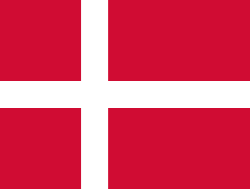 Randers, Denmark (since 1947)
Randers, Denmark (since 1947) Ålesund, Norway (since 1947)
Ålesund, Norway (since 1947) Zaporizhzhya, Ukraine (since 1953)
Zaporizhzhya, Ukraine (since 1953) Pécs, Hungary (since 1956)
Pécs, Hungary (since 1956) Garmisch-Partenkirchen, Germany (since 1987)
Garmisch-Partenkirchen, Germany (since 1987) Suhl, Germany (since 1988)
Suhl, Germany (since 1988)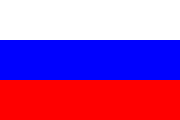 Kaluga, Russia (since 1994)
Kaluga, Russia (since 1994) Narva, Estonia (since 1994, partnership agreement)
Narva, Estonia (since 1994, partnership agreement) Deyang, China (since 2000)
Deyang, China (since 2000)
External links
- Lahti's Official city website
- Lahti Guide - information for visitors to Lahti
- Lahti travel guide from Wikitravel
- Lahti travel
MAPS
MEDIA
- Etelä-Suomen Sanomat - local newspaper in Finnish
- Uusi Lahti - local newspaper in Finnish
|
||||||||
